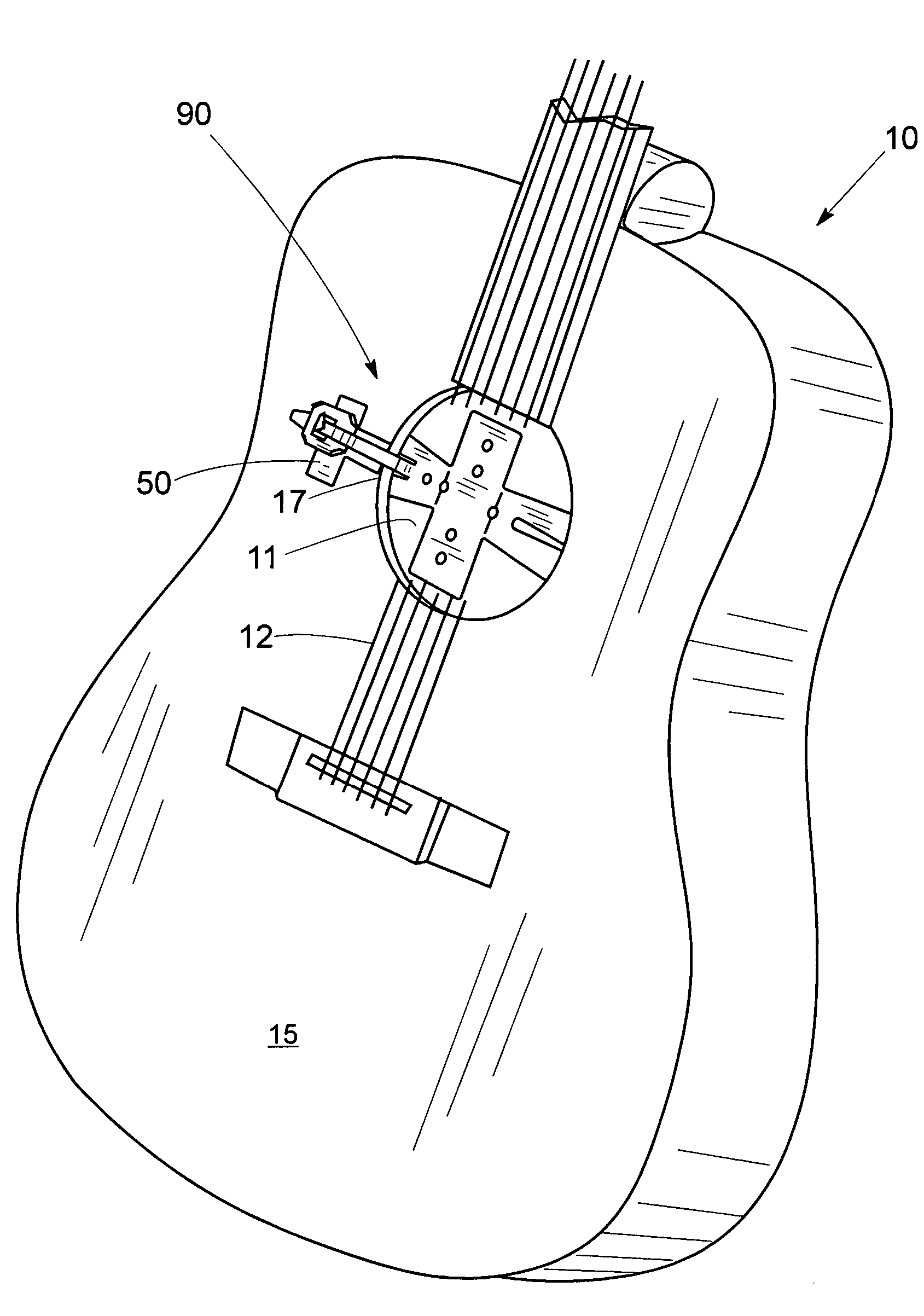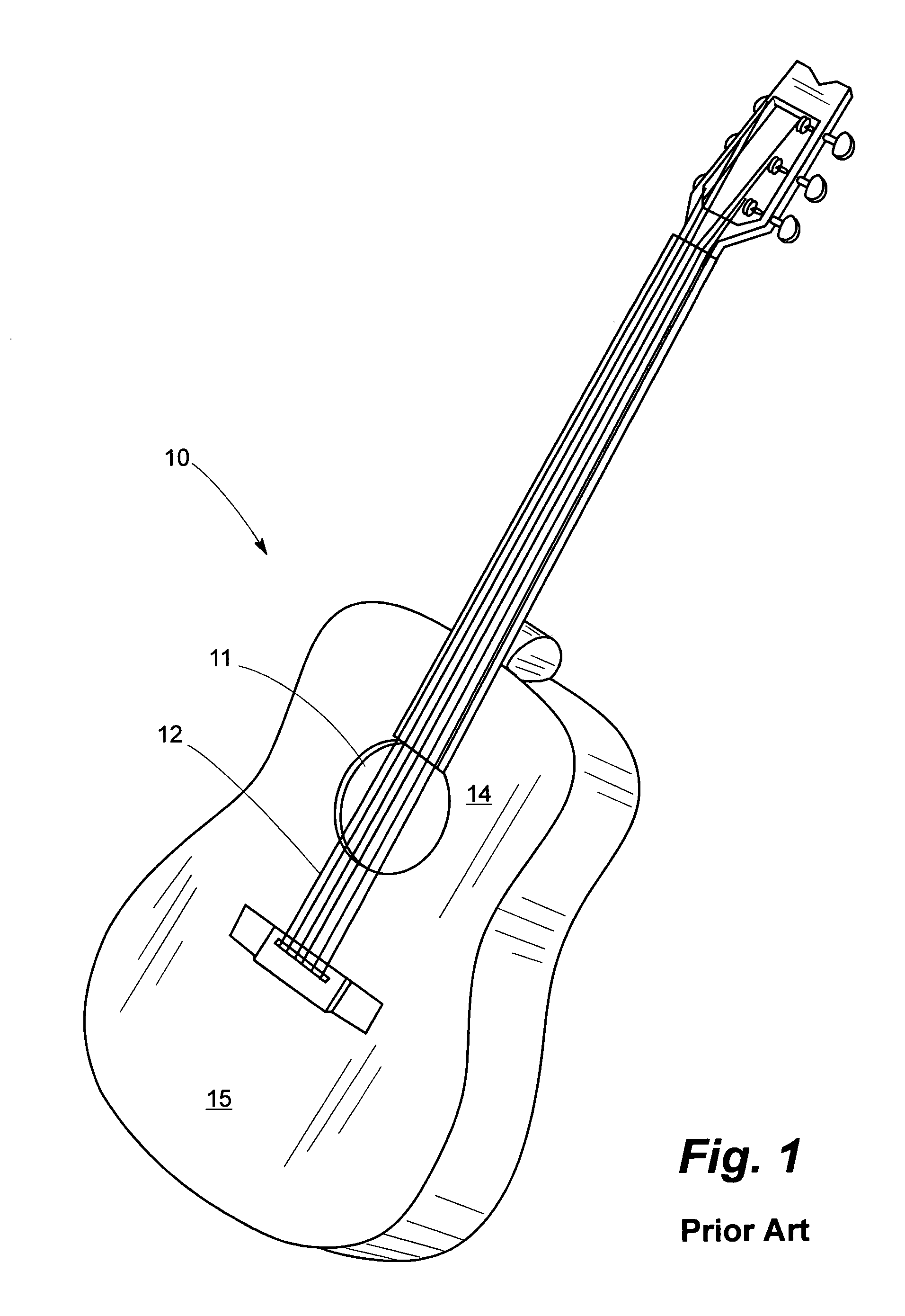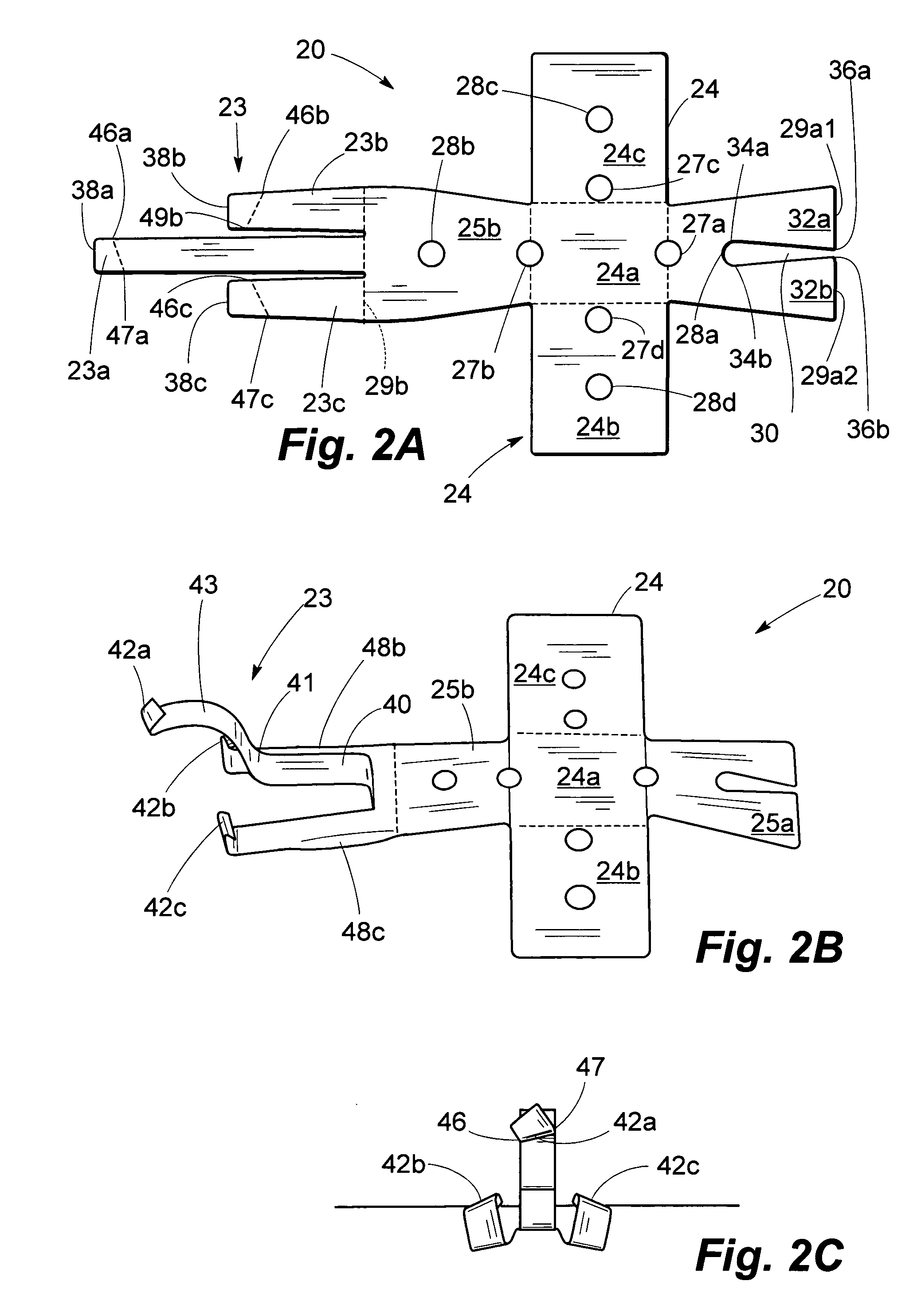Acoustic guitar resonator
a resonator and guitar technology, applied in the field of stringed musical instruments, can solve the problems of limited guitarist control, loud volume, and high cost of a guitar with outstanding sound, and achieve the effect of increasing the sound quality and volume of a conventional acoustic guitar
- Summary
- Abstract
- Description
- Claims
- Application Information
AI Technical Summary
Benefits of technology
Problems solved by technology
Method used
Image
Examples
Embodiment Construction
[0025]FIG. 1 illustrates conventional guitar 10 having guitar top 15 defining sound hole 11, and a plurality of strings 12. The areas immediately next to sound hole 11 and generally referred to by reference number 14 are small but active areas of sound on guitar top 15. When guitar 10 is played, surface acoustic waves (composite waves of a plurality of different frequencies) travel on the top and underneath surfaces of guitar top 15, and in particular, rich harmonics which are essential for quality sounds are found in areas 14.
[0026] The resonator assembly, devices and methods according to the present invention provide means to detect, copy, modify, amplify and route the surface acoustic waves on areas 14 of guitar top 15 so as to enable the guitarists to obtain quality sound, high volume, and different timbre from a conventional acoustic instrument, such as guitar 10. The present invention achieves the desired results by manipulating and utilizing well known characteristics of sou...
PUM
 Login to View More
Login to View More Abstract
Description
Claims
Application Information
 Login to View More
Login to View More - R&D
- Intellectual Property
- Life Sciences
- Materials
- Tech Scout
- Unparalleled Data Quality
- Higher Quality Content
- 60% Fewer Hallucinations
Browse by: Latest US Patents, China's latest patents, Technical Efficacy Thesaurus, Application Domain, Technology Topic, Popular Technical Reports.
© 2025 PatSnap. All rights reserved.Legal|Privacy policy|Modern Slavery Act Transparency Statement|Sitemap|About US| Contact US: help@patsnap.com



